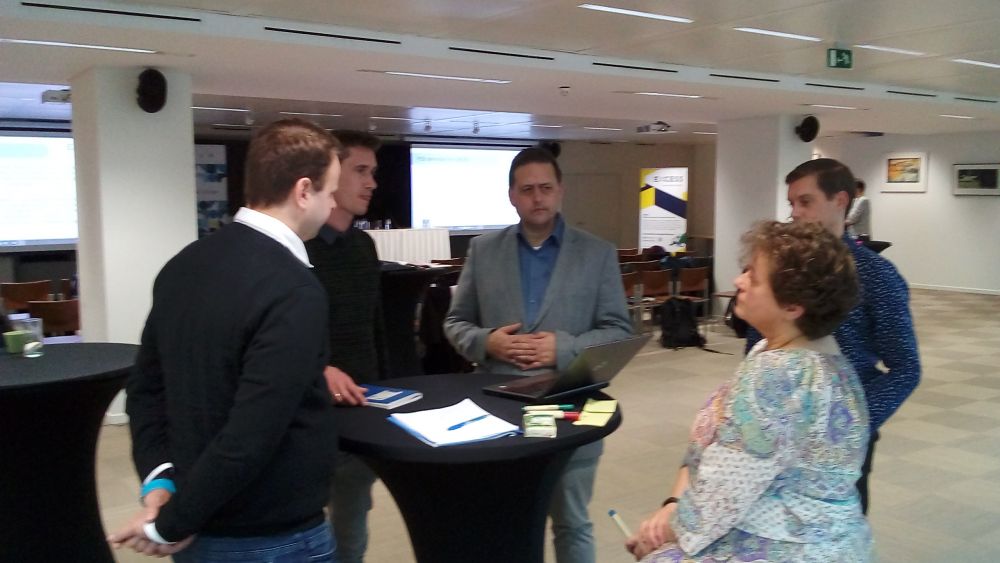Interview with Andreas Türk from Joanneum Research, coordinator of the EXCESS project
27 September 2019
Why a project such as EXCESS?
We know that the building sector is responsible for 40 percent of energy consumption, as well as greenhouse gas (GHG) emissions in the EU. As such, the decarbonisation potential within this sector is great. Energy efficiency, including zero emissions buildings, is one of the pathways the EU strategy for a climate-neutral Europe lists as a way to achieve net-zero GHG emissions by 2050. With this in mind, we started brainstorming with several current project partners about how we could contribute to this goal. The technologies for zero-emission buildings are already available. We wanted to go even further and show that it is possible to build and renovate buildings to make them become energy positive.
What is the EXCESS project about?
The EXCESS project shows that it is possible to build or transform nearly-zero energy buildings into positive energy buildings. In other words, buildings that now produce the majority of the renewable energy they consume, will produce more energy than they actually need. A possible key enabler that will be considered in EXCESS is the Clean Energy Package that provides for collective self-consumption, energy communities, and market links that may improve the economics of plus energy buildings.
Project partners will work with four demonstration sites located across the four main European climatic zones: the Nordic, Continental, Coastal/Oceanic and Mediterranean climate. All of them had started preparatory work before the Covid-19 crisis. We are now looking forward for them to be able to go ahead with their work!
Who are the EXCESS project partners?
Within the EXCESS project, we are working with 21 partners from 8 European countries. Some of them are research institutes leading on building concepts and materials; others are institutions that focus on electric and thermal storage and flexibility applications. But we are also working with IT developers, developing ICT for local flexibility management and grid interactions, completed by a range of technology providers and integrators, by experts on innovation and replication, by architects that will promote Positive Energy Building concepts in their designs, and of course by investors in those buildings and their upgrades. Until now, cooperation between this diverse group of partners has worked quite smoothly and we are positive about our future work.
Where is the EXCESS project going to be active and how?
As already mentioned, project partners will work with four demonstration sites, each located within one of the main European climatic zones: in the Nordic climate: Helsinki, Finland, Continental: Graz, Austria, Coastal/Oceanic: Hasselt, Belgium and Mediterranean: Granada, Spain. We have a strong commitment to the involved frontrunner cities and regions in which the demonstration cases are located. From their outset, we have been taking into account user requirements and market player needs to co-design and integrate innovative technologies into the different building contexts.
What do you expect the EXCESS project to achieve and how will it contribute to the energy transition?
Besides the general aim of demonstrating Positive Energy Building solutions for residential buildings, EXCESS project partners would like to advance new materials, technologies and systems that are needed for PEBs in different climate zones. This will all be achieved while promoting a “user-centric approach”, meaning that building tenants and owners will be involved in all the aspects concerning them. Importantly, as EXCESS is an innovation action, we aim to translate the findings into exploitable and innovative new products. Finally, we aim at maximising the project’s technical, social and economic impact through co-innovation, replication and exploitation activities with a wide range of stakeholders understanding avenues for future market roll out.
What can a person/ company do, which is interested in Positive energy buildings?
In addition to working on its own innovative demonstration cases, the EXCESS project team has started mapping already existing examples of Positive Energy Buildings all over Europe, which are gradually being added to an interactive map on our website. We already identified nearly 60 further existing PEBs across Europe. In case you know of a PEB that is not yet included in our map, please get in touch with us at stocktaking@positive-energy-buildings.eu.
For more information about the project, you can visit our Website or follow us on Twitter @EXCESS_EU or LinkedIn.
Photo from 2nd EXCESS Project meeting in Brussels (ICLEI Europe)
All news
